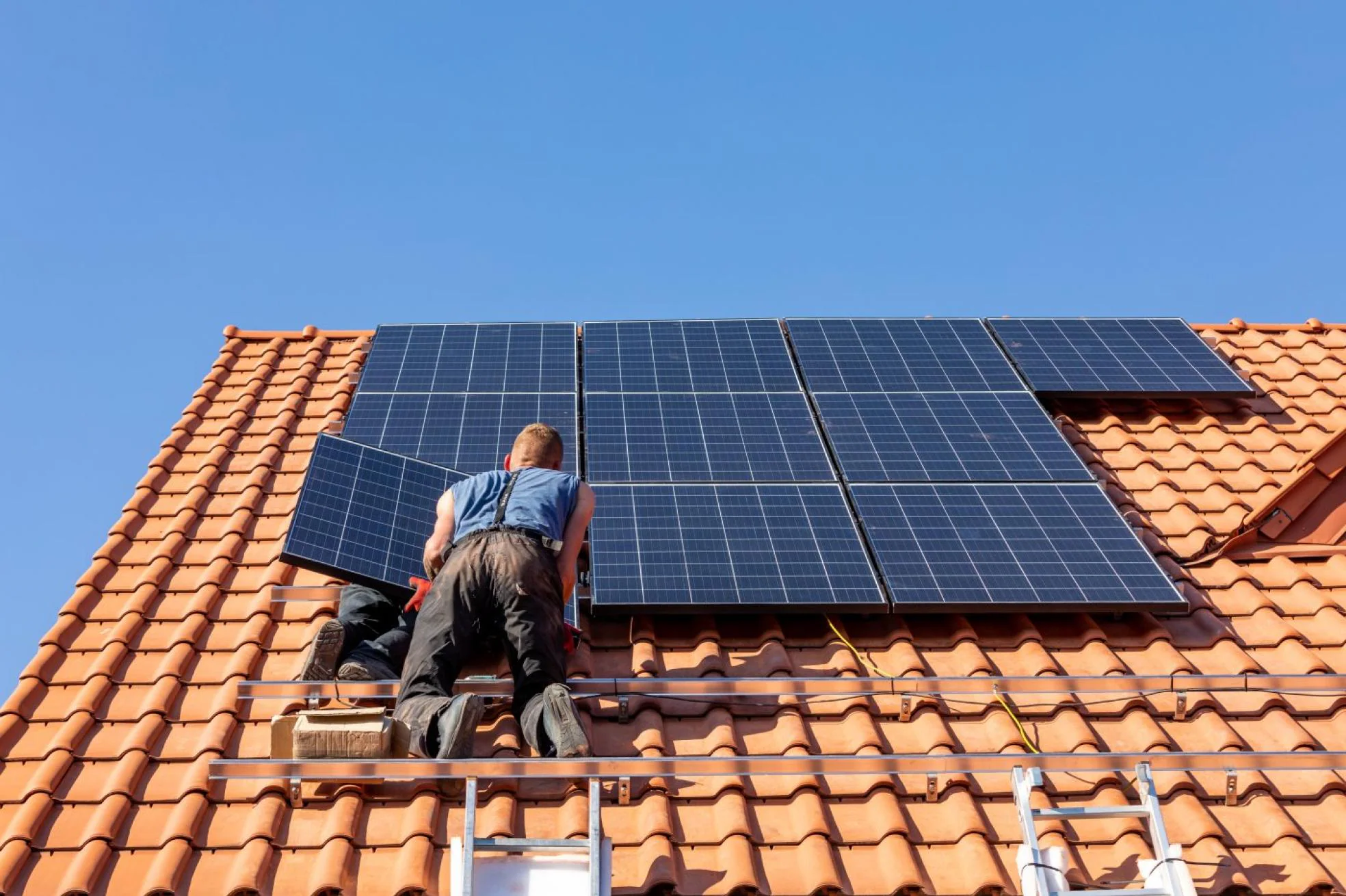Should I think about installing solar panels?
Ways to combat the rising cost of electricity. ·
How many panels would I need? Is it worth having batteries? With the help of experts in the sector, SUR answers some of the most common questionsIGNACIO LILLO
Friday, 19 August 2022
The increasing cost of electricity, the subsidies offered for renewable energies and greater environmental awareness have led many people to consider installing solar panels on their home, because it would mean they could produce their own electricity from panels on their roof. Installation companies say demand has been unprecedented in recent months, but they are also concerned that many potential clients do not know much about how these systems work.
With the help of José Francisco Alcaide, who is a specialist with more than 20 years' experience in the sector and a partner in Malaga firm 4Tenergy, SUR decided to clarify some of the principle points about this type of energy installation.
Who can have solar panels? Properties with a roof of their own, or with permission from the community of owners
The first question might seem a bit obvious, but it is worth clarifying. To have access to photovoltaic energy, the property must have its own roof, like villas, semi-detached houses or top floor apartments. For other types, there is the possibility of asking the community of owners for permission to use part of the roof for this purpose, but that is more complicated. Generally speaking, owners of apartments in the middle or ground floors of buildings are not able to install solar panels, although there are some more advanced systems nowadays which allow small ones to be placed on balconies or terraces.
How much power do I need? For an average home, between two and three kilowatts is enough
A typical installation should have at least two or three kilowatts of power installed (which is what the panels would produce in ideal circumstances), says José Francisco Alcaide, although it depends on the size of the family, what the roof is like, and how much shade there is. Nor should power and energy be confused: the solar panel is designed to produce kilowatts per hour of energy (kw/h), while the power is instantaneous and indicates how many electric appliances can be used at the same time. People normally contract three to five kilowatts, as this gives scope for more items to be used simultaneously.
"The panels normally cover between 50 and 70 per cent of your annual demand for electricity," Alcaide says.
How much space would I need on my roof? Between 12.5 and 20 square metres of roof exposed to the sun
A good-sized roof area is essential for solar energy. An average installation has between five panels (for 2 kw) and eight (for 3 kw), each measuring about two square metres. As there needs to be a certain space between them, you need at least 12.5 and up to 20 square metres.
You have to bear in mind as well that during the day there are 12 solar hours and another 12 with no sun. Peak production occurs during about two hours, or three hours in the summer. Also, the equipment loses power depending on the temperature (during cold weather and in extreme heat), cloudy days, when there is 'calima' dust from the Sahara, and dirt on the panels and the wiring. It means that real production is normally slightly lower than the amount of installed power, and is around 18 per cent on average. To give an example, a 2.2 kilowatt installation will actually produce about 1.8 kilowatts.
How many pieces of equipment have to be installed? Panels, supports, inverter, cables and meter
A solar installation consists of several photovoltaic panels which are mounted on anodised aluminium structures (to prevent rusting when they are less than five kilometres from the coast) and placed facing the direction where there is most sunlight. Another key part, which very few people know about, is the inverter, which is the piece that enables the electricity produced by the panels as direct current to be converted into alternating current, so it can be used in the home or fed into the grid if it is not needed indoors.
A hybrid inverter enables the electricity to be stored in batteries. This is a box about the size of a computer screen with a small marker to show production in real time, among other data. In addition, there needs to be an electrical protection panel alongside it, so there has to be enough space for both these components inside the property.
The use of batteries is optional, and space is also needed for them inside the home.
The other key element, to achieve full performance from the equipment, is the meter, a telematic system which monitors the installation and, via a mobile phone, enables you to know at any moment how much electricity it is producing, how much you are using and how much is being fed into the grid, for which you will receive payment. This allows you to adjust how much you use yourself. Finally, the installation has to be certified by the Ministry of Industry.
How is the installation used? The aim is to optimise the amount you produce from the solar panels and the amount you use
If you instal solar panels, you have to be prepared to adapt and change your habits. To achieve the maximum saving, you need to match supply and demand, by trying to use the energy you need at the same time it is being produced. "This is because it saves you having to buy electricity from the supplier," says Alcaide.
Ideally, domestic appliances that function on demand, like the washing machine, tumble dryer, dishwasher and oven, are used when most electricity is being produced, which is generally in the middle of the day from around noon to 4pm. The amount of electricity used by these appliances depends very much on how old they are, the brand and the model. The range is very wide, but experts always recommend buying the ones which use the least power, not the ones which are cheapest.
Generally, José Francisco Alcaide explains, the time during which the solar installation is producing between 1,000 and 1,500 watts is the time to put electric appliances on or use the hot water. The rest of the time, it powers the appliances which have to be on permanently, like the fridge, the internet router and whatever is on standby (such as the TV, computer etc). With regard to air conditioning, an inverter unit for a room which is 20 square metres in size uses about 1,000 watts per hour (or from 2,000 to 3,000 if it is a centralised system).
The important thing is not to put everything on at the same time, but to stagger consumption during the hours of sunlight: for example, by putting the washing machine on first, then using the ceramic hob to cook and then the dishwasher afterwards. Although also, when production is around two kilowatts, it will be possible to use two domestic appliances at the same time, and more if the amount of energy being generated is higher.
Modern appliances normally come fitted with timers, so you can set the exact time you want them to come on and make sure it coincides with peak solar energy production. Anyone who is planning to replace an old model should ensure that the new one has this function.
Selling the surplus It's a help, but you won't earn more than you pay for electricity
If you're not at home during the time when most energy is produced there is no need to worry, because your electricity company will pay you for the surplus which is fed into the grid. But there is a trick: the amount is limited to the kilowatts you use from the grid: so if you use 100 kw of their electricity a month, that's all they will pay you for even if you have fed 1,000 kw into the grid.
The amount of electricity used which appears on your bill can be reduced to a minimum, but you will still have to pay for the amount of power you have contracted. It is usual for suppliers on the free market to pay between six and ten céntimos per kilowatt hour (kwh); although you pay quite a bit more in the regulated market (where the actual tariff for consumers is also very high). Each user will have to do their own research to see which type of contract suits them best because there are dozens of options including virtual operators who 'save' these surplus kilowatts to be used in the winter
In conclusion, the best thing is to install in your home exactly the solar panels you really need, no more and no less; and it will always be more profitable to use the electricity you produce before selling it, because the companies charge much more per kilowatt hour than they pay, and there are limitations.
Are subsidies available? The average price of an installation without one is about 6,000 euros
The average price of a three-kilowatt installation is between 5,500 and 6,000 euros plus the value added tax (IVA), so from 6,000 to 7,200 euros in total. It is slightly more economic if you opt for lower power (4,000 euros for two kilowatts). That is a lot of money for an average family, but the good news is that subsidies are available at the moment.
José Francisco Alcaide explains that the government is currently using the EU Next Generation funds for this purpose, managed by the Junta de Andalucía. More funds have been released due to the enormous demand at present, and it is hoped that still more will be made available.
The grant for individuals is 40 per cent, so with that amount discounted directly from the quote for the installation, a basic two kilowatt system would cost around 3,000 euros, and a three kilowatt version would be about 4,000 euros (although the prices depend on the characteristics and needs of each property). With the subsidy, it will take about three to four years to offset the cost, compared with five to six years without one.
Alcaide stresses that even without any financial help, it is worth installing solar panels for two reasons: one is that the cost is offset quite quickly, and the other is that the subsidy has to be declared in the following year's tax return, not the same year.
Battery, yes or no? An investment of 6,000 euros more, and a useful life of 16 years
The final decision to make is whether to install a battery as well as the panels, to accumulate the energy you don't use during the day and use it during the night instead. It is expensive, but in some cases can be worth it and the household would become almost completely self-sufficient for electricity.
A battery with a ten-kilowatt capacity costs around 6,000 euros, installed and certified. The current subsidy scheme covers up to 80% of the cost. Without the grant, it would take eight to ten years to pay for itself, but the battery can withstand about 6,000 charge/discharge cycles. As there is one cycle a day, it has a useful life of 16.4 years. That means between six and eight years of not having to pay any electricity bills for your home.
Finally, José Francisco Alcaide recommends that anyone who is interested in the idea of installing solar panels should make sure they receive full information and advice from specialists before going ahead.
"Don't go for really cheap prices, because there is always small print involved with those," he says. "And steer clear of so-called bargains, because in some cases systems are not being installed properly because demand is so high."



